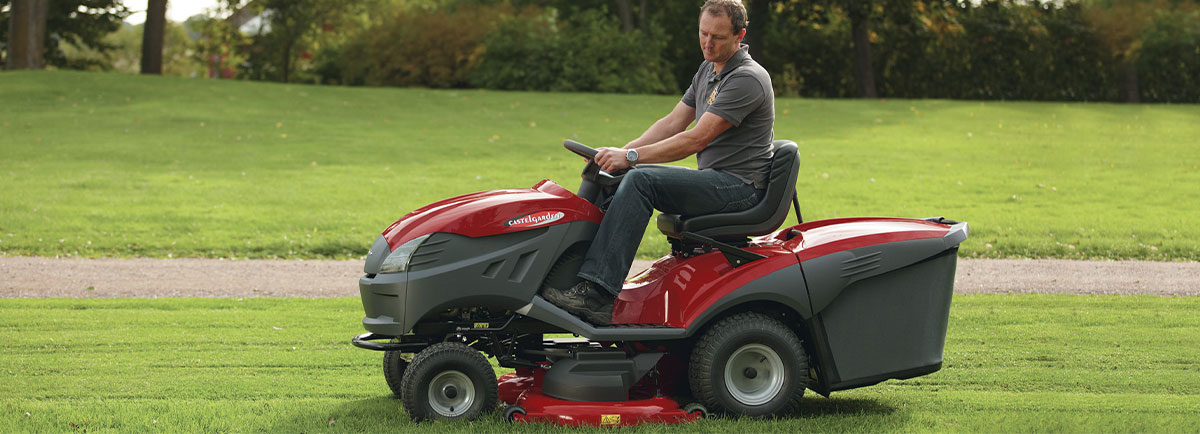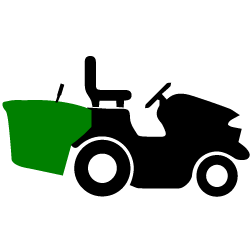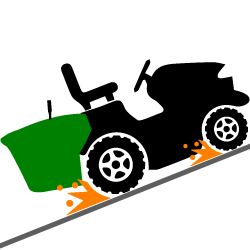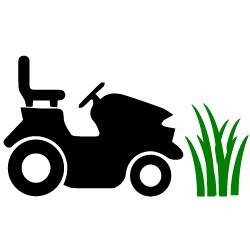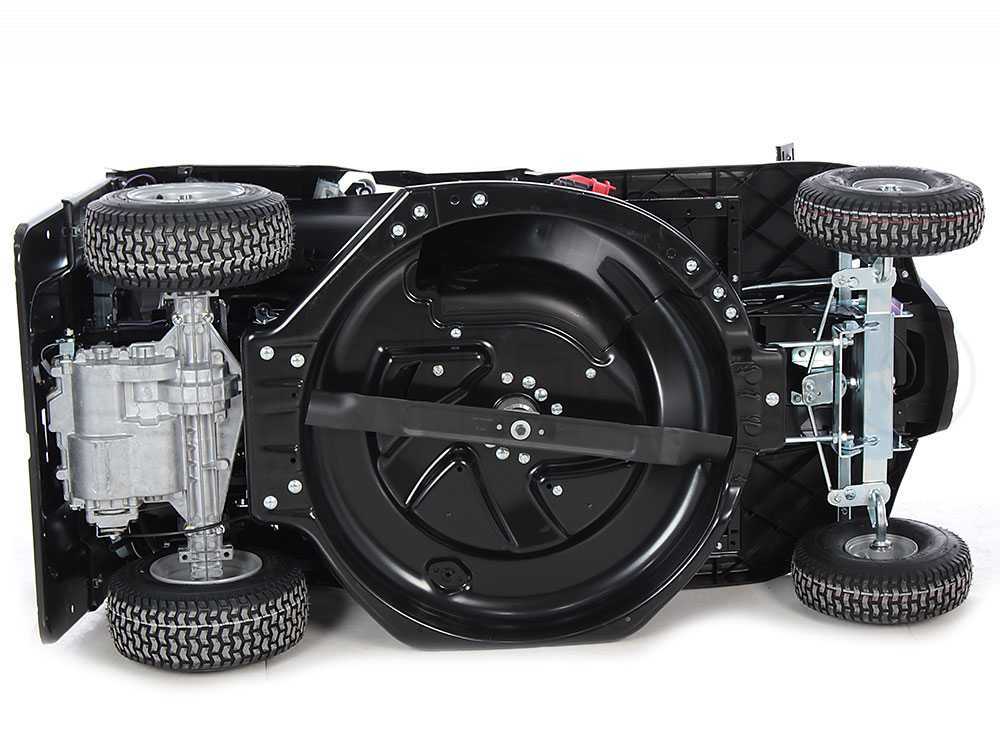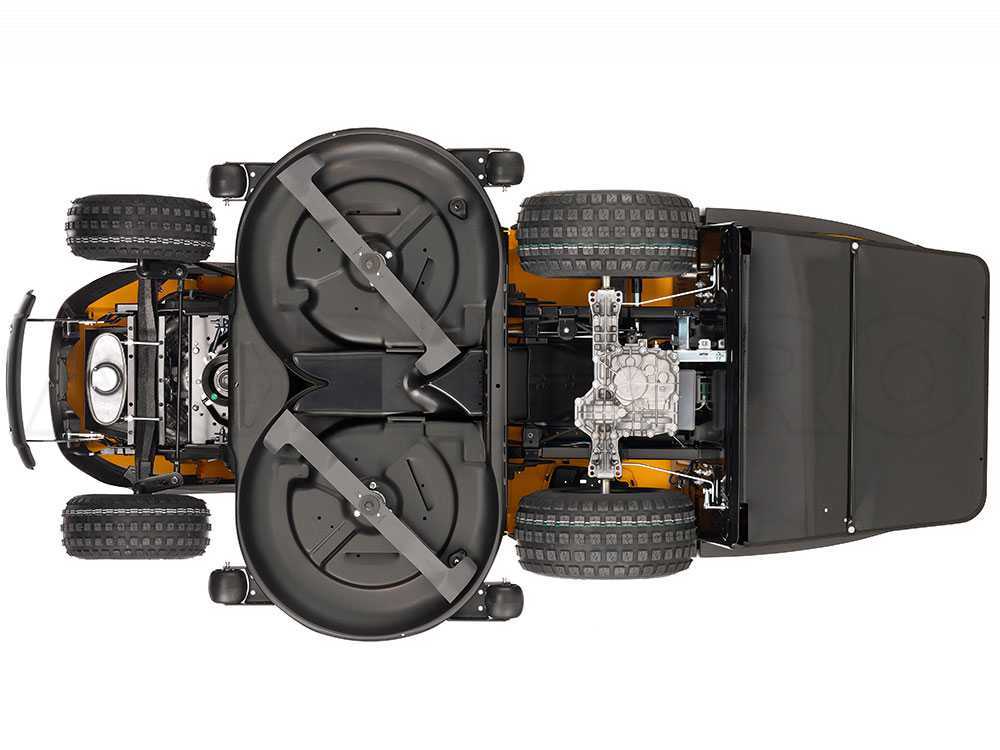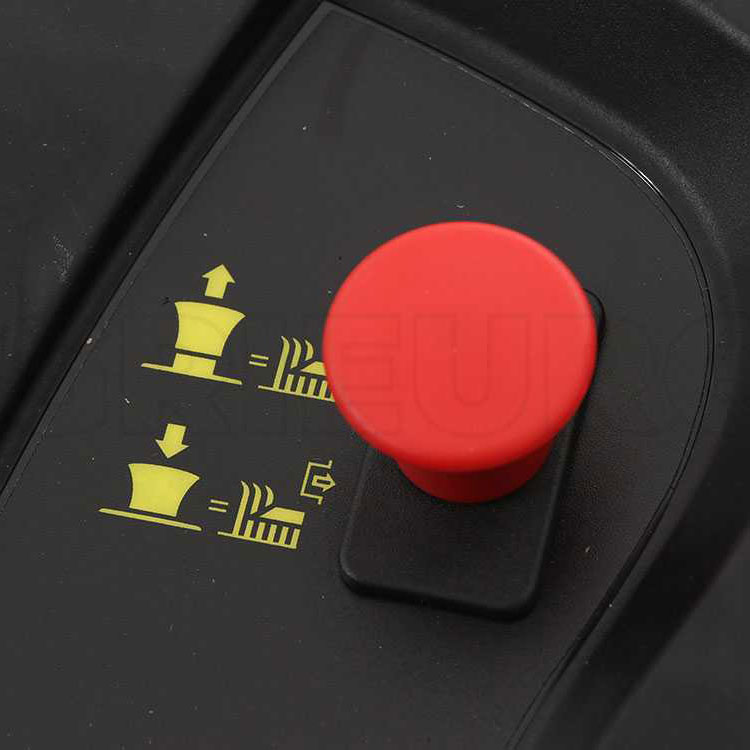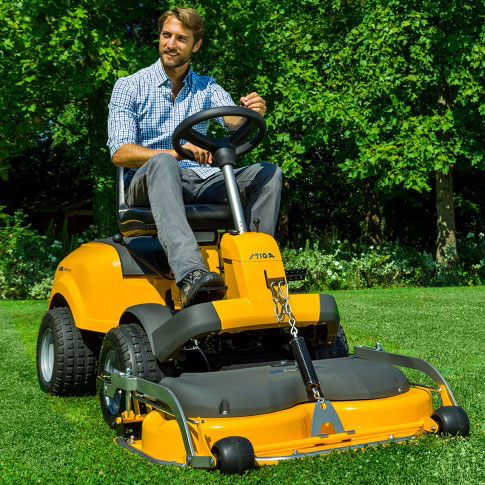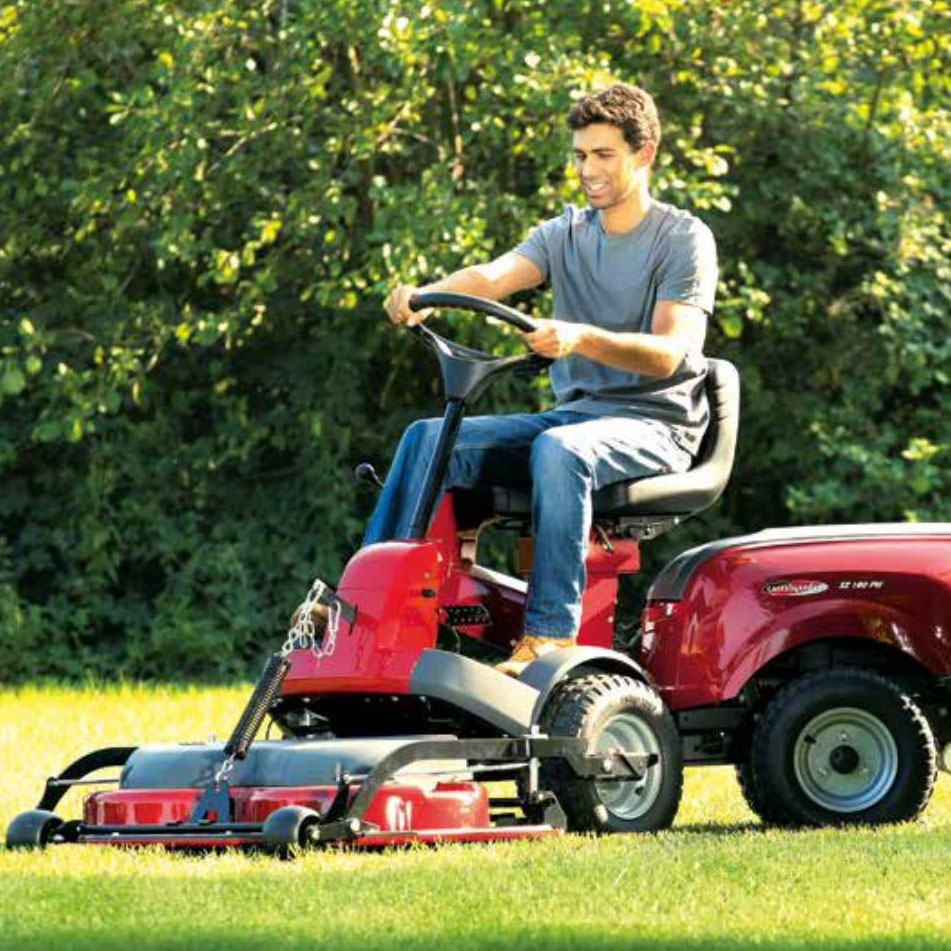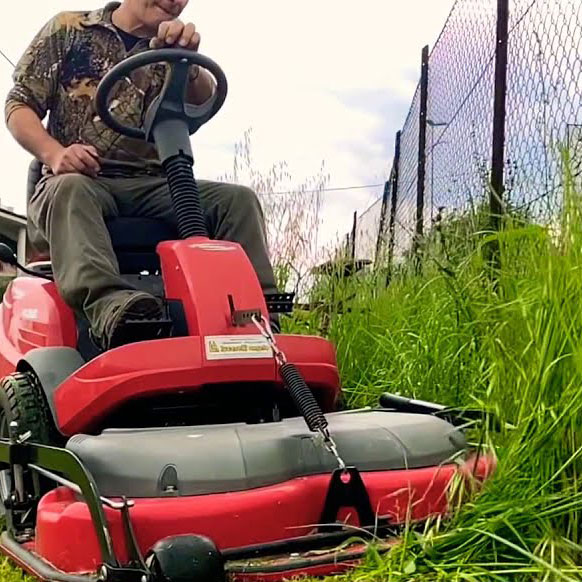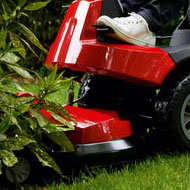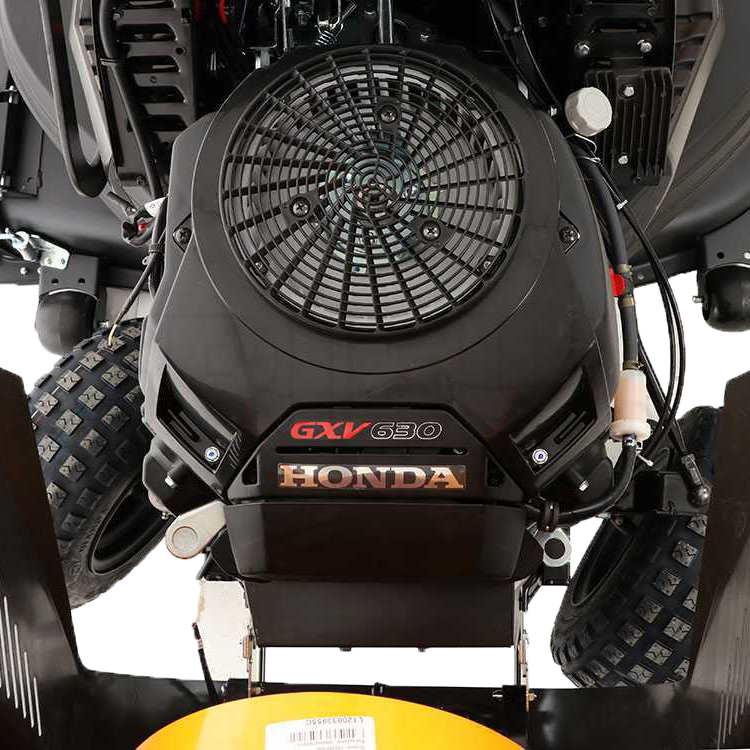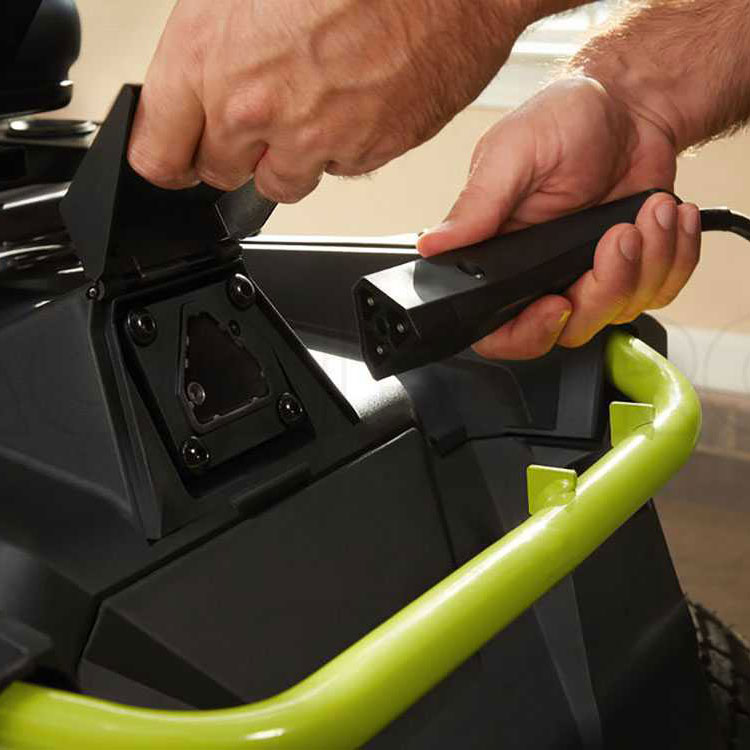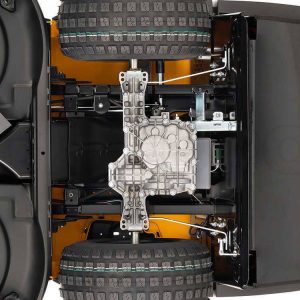A comprehensive guide to purchasing the best riding-on mower, covering all the different types and their application areas.
The Complete Guide to help you choose the Best Riding-on Mower
by the Real Experts of Garden Machinery
The riding-on mower is the ideal garden machine to cut large lawns. The riding-on mower is often not just a choice, but a necessity. To take care of very large garden areas, from 1000/1500 square metres up, lawn mowers and brush cutters are not enough. In addition to this, a riding-on mower saves effort for the operator and has the aesthetic appeal of a well-maintained machine.
CONTENTS
1. The riding-on mower: an introduction
Using a riding-on mower makes all the difference in terms of comfort, results and time savings. Driving a riding-on mower is easy and fun, this way, taking care of your garden becomes a truly enjoyable experience. Obviously, compared to other lawn mowing equipment, a riding-on mower has a higher cost due to the peculiarity and complexity of the machine.
There are several riding-on mowers models on the market, which will be discussed in detail throughout this guide, the main difference lies in the grass cutting system:
- rider riding-on mowers with side discharge cutting system or grass collector
- classic riding-on mowers with side discharge cutting system or grass collector (also available in 4×4 version)
- front cutting riding-on mowers
- ZRT riding-on mowers
- riding-on mowers for uncut grass
2. Lawn size and cutting deck
One of the main features of a riding-on mower is the cutting width. This term refers to the actual capacity of the riding-on mower blades to cut grass in one pass. This figure is generally proportional to the engine power and, of course, to the recommended cutting area for which the riding-on mower is suitable.
Clearly, for a large lawn a wide cutting width is recommended, and vice versa.
The main goal remains the same: to carry out the job as quickly as possible and with the best quality. A large cutting width is, of course, a specific feature of larger, more professional, high-performance and more expensive riding-on mowers. In general, as the width of the cutting deck of the riding-on mower increases, so will the degree of professionalism of the machine, which will then belong to the high-performance machinery range.
But the cutting width can be both an advantage and a disadvantage. A large cutting deck provides greater speed to carry out work, but also more bulk and greater difficulty in manoeuvring the machine. For these reasons, not only the size of the area to be cut must be taken into account, but also whether it is flat or sloping, and whether it is ‘free’ or has obstacles such as trees or flowerbeds.
Therefore, the larger and more unobstructed the lawn area, the more efficient will be a classic riding-on mower with a large cutting deck. Otherwise, if you have a small lawn to take care of, you can opt for the smaller, more practical riding-on mower models.
The rider riding-on mowers, in fact, can be chosen as an alternative to the classic hand-pushed lawn mowers, providing a comfortable seat and a consistently good cut quality. The “rider” type of riding-on mowers can be used for areas ranging from 200 square meters up to 2500 square meters.

Rider cutting deck 
Riding-on mower cuttind deck for large areas
Therefore, choosing a cutting deck that is too wide can be a mistake: a large-sized riding-on mower may be difficult to drive in a medium-sized garden. However, the shape and size of the deck also make a difference. These characteristics must be assessed on the basis of the specific area to be treated. If the lawn has a lot of obstacles (trees, flowerbeds, bushes, outdoor furniture), it is better to have a riding-on mower model with a small cutting deck, whereas for large areas with obstacles, it is better to choose a front cutting riding-on mower.
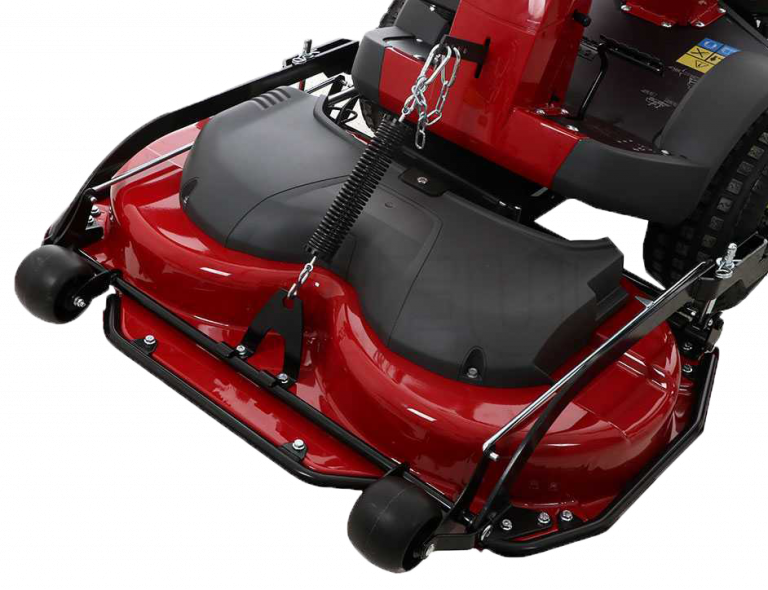
In addition, if the area is large and also has a significant slope (25% max.), it is advisable to opt for 4×4 four-wheel drive riding-on mowers. It should be noted that all brands of all riding-on mowers (with a few exceptions, including 4×4 models) can withstand slopes of up to 15%, although it is advisable not to exceed a 10% slope, both for the safety of the operator and to avoid damaging the drive belt in the long term.
In general, there is a suitable riding-on mower model for all lawn areas from 1000 square metres to over 10000 square metres. On the market it is possible to find riding-on mowers equipped with multiple cutting decks: these machines feature several cutting tools to meet any type of requirement (these are models intended for professionals).
Another important aspect is the blade engagement of the riding-on mower cutting deck.
In addition to the classic manual engagement lever, some models have an electromagnetic blade engagement, activated by the red or yellow button, which can be generally found to the right of the steering wheel or seat. This system is usually installed on more heavy-duty and expensive riding-on mowers and is an evolution of the classic lever engagement. The electromagnetic engagement works thanks to an electromagnetic clutch that allows a practical and fast engagement of the blades.

Manual blade engagement lever 
Electromagnetic blade engagement
3. Types of riding-on mowers
The world of riding-on mowers offers many different models that can be found on the market at varying prices. The types of riding-on mowers differ according to the use and work requirements. The characteristics that set apart one type of riding-on mower from another are essentially as follows:
- shredded grass management
- engine position
- cutting area overview
3.1 Shredded grass management
A riding-on mowers can offer various solutions to dispose of shredded grass residuals, there are three different systems:
- side discharge system
- grass collection system
- mulching cutting system

Side discharge 
Grass collection system 
Mulching cutting system
The discharge system is the more practical cutting solution because it does not necessarily require to use a grass collector or to shred the grass finely. Often, riding-on mowers equipped with only this cutting system also have a much more affordable price. All shredded grass residuals are discharged to the ground via a side opening during the entire lawn mowing process. Of course, with this solution the shredded grass will have to be collected ad disposed manually after mowing work is completed.
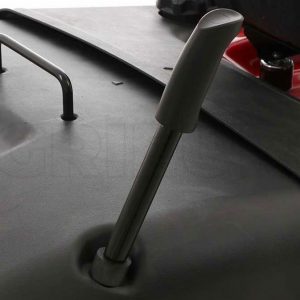
The grass collection system is the most common solution: the riding-on mower features a bag for collecting the shredded grass. The cutting residues go into the bag, which, depending on the machine model, has a higher or lower collection capacity. The shredded grass will not be scattered on the ground, however the user will still have to unload the basket once it is full; this operation can also be carried out comfortably while sitting on the riding-on mower, using the handle located directly on the grass collector.
The mulching cutting system can be standard or optional by purchasing the mulching plug to use this cutting function.
Normally, a riding-on mower that has a standard mulching cutting system is classified as a professional-range machine; the mulching cut is qualitatively the best possible lawn cutting system. The riding-on mower with mulching cutting system has peculiar, specific blades. The cutting level of the specific mulching blade is not comparable to a blade that supports multiple cutting decks or standard cutting systems.
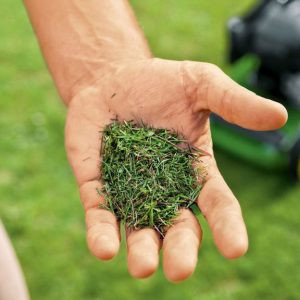
The mulching system creates a vortex with centrifugal effect that pulverises the grass in fine particles which will then be evenly distributed across the cutting surface. The grass remains suspended in air for a longer time inside the riding-on mower housing (thanks to the air flow created by the movement of the special blade with optimized shape), falling many times on the blade and being pushed up each time. This technology guarantees a higher quality cut compared to that achieved with standard lawn mower blades. These small pieces of grass will not float on the freshly mown turf, but will lay directly on the ground, decomposing very quickly. They will act as fertiliser for the new lawn, transforming into nutrients and water (in fact, grass is more than 70% water). This way, the biological cycle of the lawn will be completed. The lawn appearance after mowing, under normal conditions, is practically the same as that of a riding-on mower with grass collector, the advantage being that, with the mulching cutting system, there is no need to manually dispose of shredded grass residuals.
3.2 Engine position and cutting area overview
The position of the engine is crucial in a riding-on mower, as it distinguishes riders from “standard” riding-on mowers. In fact, the engine on the riders is located at the rear of the riding-on mower: behind the seat and not at the front. This gives the machine greater manoeuvrability: the front part of riders is not very extended and this allows it to be more agile between the obstacles, such as plants and flowerbeds, that may be in the garden.
The absence of the engine at the front of the riding-on mower, and consequently the absence of the extended front part, also allows a greater cutting area overview for the driver. The high driving position, on a comfortable, cushioned seat, allows a 360-degree view of the turf.
4. All riding-on mower types
4.1 Mini-rider and Classic Riding-on mowers

The differences between a “rider” type of riding-on mower and a classic riding-on mower are not only aesthetic, but also structural and functional. As mentioned above, the classic riding-on mower has an extended front part with a front-mounted engine and is normally used for mowing taller grass and for the green maintenance of larger areas. Mini-riders are structurally ‘simpler’ and have an ‘essential design’: they are easy and fun to ride and allow you to cut lawns with many obstacles, such as plants and hedges, thanks to their agility and manoeuvrability.
The ease of use is the key feature of mini-riders: the low weight and small bulk means that smaller and more cost-effective engines can be fitted, which has a positive effect on the final price of the riding-on mower.
Recently, lithium-ion battery-powered riding-on mowers have increasingly become more popular. Battery-powered machines take a long time to recharge, whereas a quick top-up of fuel is enough to get a petrol riding-on mower going again. This aspect will be decisive in guiding professionals and those who need to work on large areas towards the purchase of these machines. On the other hand, battery-powered riding-on mowers offer the same features and performance (sometimes even better) as petrol riders without the high need for maintenance that the latter require.
Classic riding-on mowers allow you to take care of larger gardens and lawns, even over 10,000 square metres; the difference between the various models of classic riding-on mowers lies mainly in the engines brand and the mechanics of the gearbox, aspects that will be discussed in detail later.
4.2 Front cutting riding-on mowers
Front cutting riding-on mowers are equipped with a front-mounted cutting deck: this enables them to work even on hard-to-reach places where other classic machines can not access, for example under benches, along hedges, around trees and shrubs, to manoeuvre in rather narrow spaces and to work on steep, sloping terrain.
One of the main features of these riding-on mowers is the articulated steering which provides exceptional manoeuvrability and ease of handling: driving is easy even around obstacles such as plants or flower beds, working under and next to hedges or garden tables. Driving these riding-on mowers is really easy, practical and fun.
Another strong point is certainly the extraordinary overview of the cutting area, a 360° view that allows to trim edges and corners of the garden to perfection.
The front deck guarantees a superior cutting precision. If you want to always have control over the cutting line, then the riding-on mower equipped with a front-mounted cutting deck, i.e. with the blades mounted at the front, is the best suited garden machine for this purpose. This aspect makes it possible to decide on a direction using the cutting deck itself as an ideal reference. You can also move around garden obstacles with agility and precision. Mowing a lawn with many obstacles with a standard riding-on mower could cause shocks which would then damage the cutting deck and blades of the riding-on mower.
Riding-on mowers with front cutting deck feature the mulching cutting system: shredding the grass enables the grass residuals to be turned into natural fertiliser for a healthier, lusher lawn.
4.3 ZRT Riding-on mowers
Zero radius turn riding-on mowers have a more complex steering system, as they are operated by special levers. As the driving style is certainly not the most intuitive, it is necessary to have a greater experience in using this type of machine than other riding-on mowers.
However, the presence of the lever steering with which riding-on mowers are equipped has significant advantages:
- more precise machine movements
- 360-degree manoeuvrability (which is why they are also called zero radius turn riding-on mowers)
Both ZRT and front cutting riding-on mowers provide greater overview of the cutting area than other models.
5. The engine and the power
The engine is obviously a fundamental part of the riding-on mower. Many models mount the engine branded by the riding-on mower manufacturer, in which case they are high quality engines, but generally made in China. Well-known brands such as Honda, Kawasaki and Briggs&Stratton are top-class manufacturers and represent an absolute guarantee in terms of quality, performance and reliability.
As far as engine models are concerned, most are petrol engines, while riding-on mowers with lithium-ion battery engines are less common (despite this technology becoming increasingly popular).
When considering petrol engines, it is important to assess engine dimensions and power according to the garden size. For green spaces of less than 2000 square metres, the best choice would be medium-displacement, single-cylinder riding-on mowers with around 13 HP. On the other hand, for larger gardens of up to 4000 square metres, it is advisable to opt for riding-on mowers with high-displacement, twin-cylinder engines and around 22 HP.
In order to choose the most suitable riding-on mowers for your needs, you have to look at the rated power of the riding-on mower. The rated power is generally proportional to the size of the riding-on mower, however, higher powers are recommended for larger areas or if the grass is not cut regularly and is taller than expected. Small-sized engines are those with powers up to 10 HP, medium power engines range from 10 to 13 HP, medium to high power engines have powers from 14 to 17 HP, while large engines can reach over 18 HP. The latter category includes twin-cylinder engines (which are more powerful than classic single-cylinder ones). It should be noted that the nominal power is the power used for commercial purposes (the actual power is lower and is specified in the description of each riding-on mowers).
6. The gearbox
The gearbox of the riding-on mower is another crucial aspect. There are basically three types of gearboxes in the world of riding-on mowers:
- Gearbox: with gears, the most common and affordable type
- Automatic gearbox: functional, allows immediate speed changes without stopping
- Hydrostatic transmission: the best one, with gearless hydraulic operation and infinite speeds
The traditional mechanical gearbox is the most cost-effective type, it may be the least practical, but is nevertheless robust and reliable. With the automatic gearbox, the level of reliability is the same, but it is more versatile in use because, unlike the gearbox, it allows you to vary the speed while moving, without stopping every time. The hydrostatic transmission is the most expensive one but also the most reliable: operating with hydraulic oil and not with gears, it is the most versatile type thanks to the possibility of speed variation while the riding-on mower is moving. Finally, there is the 4×4 hydrostatic transmission: it has the same advantages as the previous one, with the added possibility of being able to work on slightly steeper slopes.
The hydrostatic transmission is equipped with robust gears that make it less subject to breakage. The hydrostatic transmission is by far the most modern and functional (although more expensive), compared to the traditional manual gearbox. The latter type, whenever it is necessary to adjust the speed, forces the operator to stop, change gear (because in all the riding-on mowers with a manual or mechanical gearbox the gear change takes place when the machine is stationary), leaving the clutch and then restart at the desired speed. In case of frequent speed variations (e.g. In gardens with trees, vases or other types of obstacles), the traditional gear transmission would not be practical at all. The hydrostatic transmission, on the other hand, allows immediate speed changes, without ever stopping and in a totally automatic manner, simply by varying the pressure on the drive pedal of this transmission.
7. Maintenance operations
It is recommended to clean the cutting deck and grass discharge plug after each use to remove any shredded grass residue that may accumulate and cause damage, overheating or otherwise poor cutting quality. It is a good idea to buy models with a washing joint. This makes washing and cleaning the cutting deck quick and easy. If the riding-on mower is a mini rider, not equipped with a washing joint, in order to wash the cutting deck from the inside, it is advisable to turn over the riding-on mower maintaining the air filter always facing upwards: this will prevent the petrol present in the engine from draining into the filter and damaging it.



